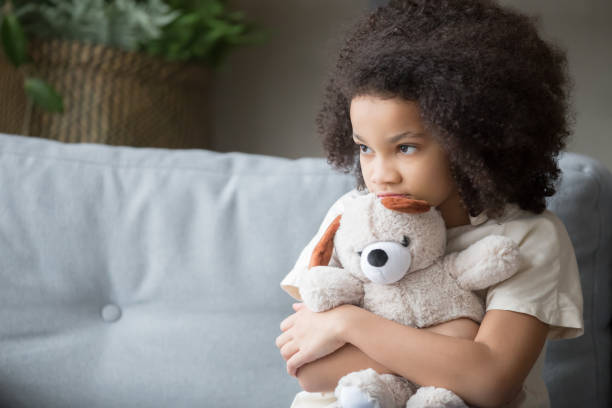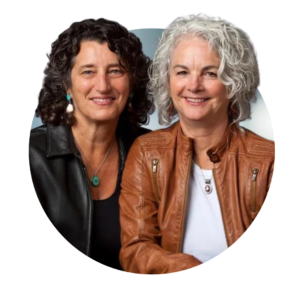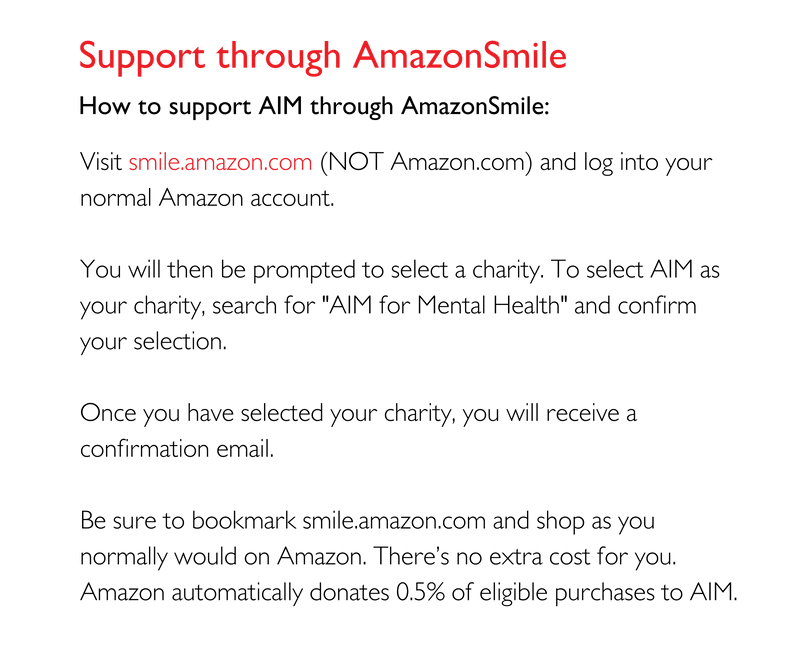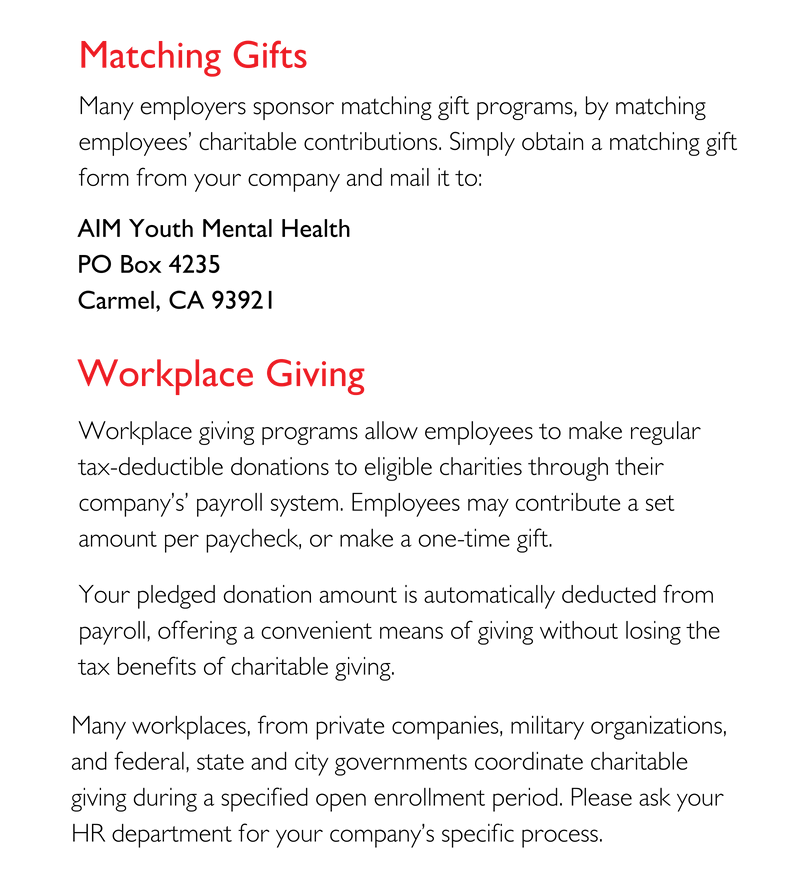
By Jill Suttie
 Many kids are moody and irritable from time to time. After all, frustrations are a normal part of life and children are not immune to feeling angry or upset.
Many kids are moody and irritable from time to time. After all, frustrations are a normal part of life and children are not immune to feeling angry or upset.
But, some children can’t seem to manage their foul moods and become significantly more angry and aggressive than other kids their age. This can lead to depression, anxiety, or a tendency to lash out at others—all of which affect kids’ relationships and ability to succeed at school and in life.
Overwhelming irritability and an inability to control it effectively is a common symptom of many psychological disorders in kids, says researcher Spencer Evans, of the University of Miami. Yet, it receives scant attention from researchers, which is problematic.
“Irritability is an under-studied, under-appreciated problem,” he says. “But, it’s also one that’s important to understand, because it can have important downstream effects on children’s and adolescents’ lives.”
With grant money from AIM Youth Mental Health, Evans has been studying how a psychotherapy protocol called MATCH (Modular Approach to Therapy for Children), developed by John Weiss’s Lab for Youth Mental Health at Harvard University, could hold the key to treating irritability in children across diagnoses. Through a series of studies, he’s discovered that MATCH not only treats depression and disruptive behavior in children more effectively than standard treatments for these problems, it also reduces irritability—something notoriously hard to treat.
“The good news is that therapists won’t need to make something up or try something totally new and untested to treat irritability,” he says. “They can combine existing treatments through MATCH, and that’s likely to help kids and their families.”
The MATCH difference
MATCH is a modular therapy protocol that combines elements of evidence-based psychotherapy treatments into a more flexible design. By drawing upon cognitive-behavioral therapy (CBT), a standard treatment for depression and anxiety, and behavioral parent training (BPT), a standard treatment for disorderliness and severe anger in kids, it uses “what works”, while giving therapists a chance to be more responsive to kids’ and parents’ emerging issues.
“It’s like a roadmap for a clinician to route kids through a core sequence of the most important treatment elements for their problem, but still allows them to address other things that may come up in therapy,” says Evans.
Evans’ interest in MATCH came out of an earlier study, where MATCH was found to be more effective than standard treatment for depression, anxiety, and conduct disorders (severe anger and disruptive behavior). Kids experienced greater improvements in mood and conduct, and both parents and kids felt that their problems were resolved better, if they were randomly assigned to the MATCH therapy rather than other therapies.
Evans wanted to see if MATCH might also be useful for helping decrease irritability and emotion dysregulation in kids; so, he reanalyzed data from this earlier study to find out.
During the study, kids (and their parents) had reported on the kids’ irritability levels, how they handled difficult emotions, and how they were progressing on reported problems over the course of treatment and up to 18 months afterwards. Having this information allowed Evans to see how symptoms improved over time depending on what treatment they’d received.
His analyses showed that MATCH was superior to the other treatments in three important ways. First, kids who received MATCH reported feeling less irritable and had fewer problems both during and after the therapy ended—something that didn’t occur consistently with kids receiving the other treatments. Evans thinks this may be because kids like the MATCH treatment better, making it more effective for them.
“Kids are smart and they probably respond a little bit better to a clinician that is able to tailor what they do to the kids’ needs, to where they’re coming from,” says Evans. “MATCH might be particularly helpful for building an alliance and actually getting buy-in from the kids.”
MATCH produced better results in other ways, too. Parents of kids assigned to MATCH saw improvements in their kids more quickly on all measures of irritability, including how much they externalized their problems (blaming others) or how much they acted out at home or elsewhere. And, the MATCH kids had fewer diagnoses at the end of treatment, which Evans finds particularly relevant.
“When you think about these diagnoses—anxiety, depression, disruptive behavior—they include significant distress and impairment; so, having one diagnosis less post-treatment, on average, is a pretty meaningful difference,” he says.
Still, Evans wasn’t sure exactly what part of the MATCH protocol may have helped with irritability. For example, did it matter whether kids went through the CBT modules for depression or the BPT modules for behavioral problems?
To tease that out, he conducted another analysis using data from a different clinical trial, considering the treatment trajectories of 200 kids with either high or low levels of irritability at the beginning of therapy. All of the kids received the MATCH treatment, but some went through mostly CBT modules (for depression) and some received mostly BPT modules (for conduct problems), giving him a chance to compare elements of MATCH to each other.
Results showed that all the kids were significantly less irritable by the end of treatment, no matter their initial irritability levels or which part of the modular treatment was emphasized. Not only that, the treatment effects lasted long after treatment ended—a result reflecting less suffering for children and their families.
To Evans, this means irritability crosses diagnostic boundaries and that MATCH can help treat it—apparently better than traditional therapies alone.
“Kids often don’t just have one problem. They might have two or three or four co-occurring problems that cut across traditional therapeutic boundaries,” says Evans. “So, for kids like that, a traditional evidence-based treatment might not be the best fit. MATCH might be more effective.”
Where to go from here
One of the strengths of Evans’ work is that his studies weren’t conducted in a lab setting by someone with an agenda—i.e., trying to prove their own therapeutic model works best. Instead, MATCH was tested with different therapists working in several community clinics, settings where kids with diverse backgrounds often seek treatment.
“Our findings are more representative of what’s likely to work in real-world circumstances with diverse families,” says Evans.
But, he adds, there is still much that needs to be done to figure out how to get MATCH to the kids who need it. After all, the protocol takes time and investment from both kids and parents, and it’s based on a traditional therapy model of 45-minute sessions every week, for however long it takes—not something every family can easily accommodate.
Evans hopes that by doing more research, he and others will find ways to streamline the treatment and to make it even more responsive to kids. And, he sees the benefit in studying other issues besides irritability that seem to cross diagnostic boundaries—like addiction to social media or peer victimization. Having effective treatment for these could really make a difference in kids’ lives.
To that end, he’s starting a new lab at the University of Miami focused specifically on understanding trans-diagnostic symptoms and how to treat them. Perhaps by focusing in on the key issues that kids and parents bring to therapy, better treatment options will be available in the future.
“There may be some value in getting away from diagnoses or mental health categories—not throwing it all out the window, but just putting it down, then taking time to listen to what’s actually happening in our patients’ lives,” says Evans. “That’s where a lot of impactful work still needs to be done.”
____________________
About the Author
Jill Suttie, Psy.D., is a free-lance journalist and a staff writer and contributing editor for Greater Good, an award-winning online magazine published by the University of California’s Greater Good Science Center. A psychologist by training, her articles cover scientific research aimed at uncovering the keys to individual wellbeing and a more compassionate society. She also records music and has two CD’s of original songs that can be heard and purchased on her personal website: jillsuttie.com.


















 Moving Upstream: A Proactive Approach to Addressing Behaviors and Bullying
Moving Upstream: A Proactive Approach to Addressing Behaviors and Bullying Krista Reuther is the Assistant Director of Ohana’s Community Health and Prevention Program. She received her Masters in Public Health and Social Work at UC Berkeley. She comes to this position after 14 years of clinical social work experience at Stanford Children’s Hospital in pediatric oncology, critical care, and bereavement. Her goal is to reduce the incidence of mental illness in children and adolescents in Monterey County.
Krista Reuther is the Assistant Director of Ohana’s Community Health and Prevention Program. She received her Masters in Public Health and Social Work at UC Berkeley. She comes to this position after 14 years of clinical social work experience at Stanford Children’s Hospital in pediatric oncology, critical care, and bereavement. Her goal is to reduce the incidence of mental illness in children and adolescents in Monterey County. Dr. Guss is a 35-year veteran educator with a doctorate degree in Educational Leadership. She served as a classroom teacher for 10 years, including two years as a teacher in a bilingual program in South Central Los Angeles. She has also served as a college professor, mentor teacher for new teachers, and a master teacher for teacher candidates completing their student teaching experience. She continues to be a strong advocate for the teaching profession.
Dr. Guss is a 35-year veteran educator with a doctorate degree in Educational Leadership. She served as a classroom teacher for 10 years, including two years as a teacher in a bilingual program in South Central Los Angeles. She has also served as a college professor, mentor teacher for new teachers, and a master teacher for teacher candidates completing their student teaching experience. She continues to be a strong advocate for the teaching profession. Fellowship: Stanford University School of Medicine (1994) CA
Fellowship: Stanford University School of Medicine (1994) CA Michael G. Thompson, Ph.D. is a consultant, author and psychologist specializing in children and families. He is the supervising psychologist for the Belmont Hill School and has worked in more than seven hundred schools across the United States, as well as in international schools in Central America, Europe, Africa and Asia.
Michael G. Thompson, Ph.D. is a consultant, author and psychologist specializing in children and families. He is the supervising psychologist for the Belmont Hill School and has worked in more than seven hundred schools across the United States, as well as in international schools in Central America, Europe, Africa and Asia.
 is 15 years old and a sophomore at Marina High School in Marina, CA. Her academic interests include math, history, and psychology. She joined the AIM Ideas Lab in 2021 because she wanted to be a part of something that could have a great impact on her community. Marwa is interested in youth mental health because she has always been fascinated with the human mind and she wants to support those that are suffering who may feel like their challenges in life aren’t important enough or are too afraid to seek necessary help.
is 15 years old and a sophomore at Marina High School in Marina, CA. Her academic interests include math, history, and psychology. She joined the AIM Ideas Lab in 2021 because she wanted to be a part of something that could have a great impact on her community. Marwa is interested in youth mental health because she has always been fascinated with the human mind and she wants to support those that are suffering who may feel like their challenges in life aren’t important enough or are too afraid to seek necessary help. Giovanna Panetta is a 16 year old junior at Carmel High School. She has always been called to STEM subjects, specifically biology. The AIM Ideas Lab instantly attracted her attention as a research opportunity. Gia has always comprehended the importance of mental health. She knows that COVID only exacerbated previously existing problems, and that as a community we can try and find the root of those problems. Mental health is an integral part of life, and can impede a body’s ability to be healthy. She strongly believes that life is worth living, and she wants to help anyone that thinks otherwise.
Giovanna Panetta is a 16 year old junior at Carmel High School. She has always been called to STEM subjects, specifically biology. The AIM Ideas Lab instantly attracted her attention as a research opportunity. Gia has always comprehended the importance of mental health. She knows that COVID only exacerbated previously existing problems, and that as a community we can try and find the root of those problems. Mental health is an integral part of life, and can impede a body’s ability to be healthy. She strongly believes that life is worth living, and she wants to help anyone that thinks otherwise. Dr. Friedman completed her undergraduate degree in Psychology from University of California San Diego (UCSD). She went on to complete her masters and doctorate degrees (Ph.D.) in Clinical Psychology from Rosalind Franklin University of Medicine and Science/Chicago Medical School. Dr. Friedman completed her pre-doctoral internship at Rush University Medical Center, Chicago, IL, and her post-doctoral fellowship training at the VA San Diego Healthcare System. Her clinical training and experience has been focused primarily on comprehensive assessment and effective treatments for anxiety, mood and related disorders. Dr. Friedman has extensive experience in providing Cognitive Behavioral Therapies for anxiety disorders (e.g. worry, OCD, social anxiety, phobias and PTSD), depression, adjustment disorders/life stress, insomnia and body-focused repetitive behaviors (e.g. Trichotillomania and skin picking). She has received training in evidence-based interventions for a variety of specific problems, including exposure with response prevention (ERP) for treatment of OCD, Prolonged Exposure (PE) for treatment of PTSD, and Cognitive Behavioral Therapy for Insomnia (CBT-I). Moreover, she has specialty training in the treatment of childhood anxiety and related disorders, such as ADHD, selective mutism, separation anxiety, PTSD, depression and specific phobias. In addition, Dr. Friedman has developed an expertise in research on Trichotillomania and body-focused repetitive behaviors, which has led to numerous local and national presentations. Dr. Friedman regularly attends local and national conferences, training seminars and workshops in order to stay informed on the most up to date treatments and apply state of the art science into her clinical practice.
Dr. Friedman completed her undergraduate degree in Psychology from University of California San Diego (UCSD). She went on to complete her masters and doctorate degrees (Ph.D.) in Clinical Psychology from Rosalind Franklin University of Medicine and Science/Chicago Medical School. Dr. Friedman completed her pre-doctoral internship at Rush University Medical Center, Chicago, IL, and her post-doctoral fellowship training at the VA San Diego Healthcare System. Her clinical training and experience has been focused primarily on comprehensive assessment and effective treatments for anxiety, mood and related disorders. Dr. Friedman has extensive experience in providing Cognitive Behavioral Therapies for anxiety disorders (e.g. worry, OCD, social anxiety, phobias and PTSD), depression, adjustment disorders/life stress, insomnia and body-focused repetitive behaviors (e.g. Trichotillomania and skin picking). She has received training in evidence-based interventions for a variety of specific problems, including exposure with response prevention (ERP) for treatment of OCD, Prolonged Exposure (PE) for treatment of PTSD, and Cognitive Behavioral Therapy for Insomnia (CBT-I). Moreover, she has specialty training in the treatment of childhood anxiety and related disorders, such as ADHD, selective mutism, separation anxiety, PTSD, depression and specific phobias. In addition, Dr. Friedman has developed an expertise in research on Trichotillomania and body-focused repetitive behaviors, which has led to numerous local and national presentations. Dr. Friedman regularly attends local and national conferences, training seminars and workshops in order to stay informed on the most up to date treatments and apply state of the art science into her clinical practice. Dr. Piacentini is a board-certified clinical child and adolescent psychologist and Professor in the UCLA Department of Psychiatry and Biobehavioral Sciences. He directs the UCLA Child OCD, Anxiety, and Tic Disorders Clinic and Tourette Association Center of Excellence which provide diagnostic evaluation and treatment (both therapy and medication) for youth with the above problems. He also directs the UCLA Center for Child Anxiety Resilence, Education, and Support (CARES; carescenter.ucla.edu) which provides education and programming to parents, teachers, and clinicians about anxiety prevention and management.
Dr. Piacentini is a board-certified clinical child and adolescent psychologist and Professor in the UCLA Department of Psychiatry and Biobehavioral Sciences. He directs the UCLA Child OCD, Anxiety, and Tic Disorders Clinic and Tourette Association Center of Excellence which provide diagnostic evaluation and treatment (both therapy and medication) for youth with the above problems. He also directs the UCLA Center for Child Anxiety Resilence, Education, and Support (CARES; carescenter.ucla.edu) which provides education and programming to parents, teachers, and clinicians about anxiety prevention and management. Citlalli Nava is 18 years old and a first year majoring in Psychology at Hartnell Community College in Salinas, CA. She is passionate about understanding how mental health affects how youth think, act, and feel. Citlalli joined the AIM Ideas Lab in 2021 after witnessing the increase in mental health challenges in teenagers and considering the mental health issues they are facing. Citlalli is interested in youth mental health because it is a real problem faced by her generation.
Citlalli Nava is 18 years old and a first year majoring in Psychology at Hartnell Community College in Salinas, CA. She is passionate about understanding how mental health affects how youth think, act, and feel. Citlalli joined the AIM Ideas Lab in 2021 after witnessing the increase in mental health challenges in teenagers and considering the mental health issues they are facing. Citlalli is interested in youth mental health because it is a real problem faced by her generation. Clinical and community psychologist and health care innovator Arthur C. Evans Jr., PhD, is CEO of the American Psychological Association, the leading scientific and professional organization representing psychology in the United States. With more than 146,000 researchers, educators, clinicians, consultants, and students as members, APA promotes and disseminates psychological knowledge to benefit society and improve lives – a mission consistent with Evans’ life work.
Clinical and community psychologist and health care innovator Arthur C. Evans Jr., PhD, is CEO of the American Psychological Association, the leading scientific and professional organization representing psychology in the United States. With more than 146,000 researchers, educators, clinicians, consultants, and students as members, APA promotes and disseminates psychological knowledge to benefit society and improve lives – a mission consistent with Evans’ life work.


